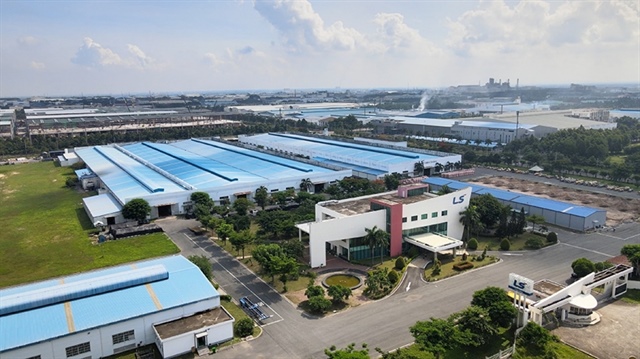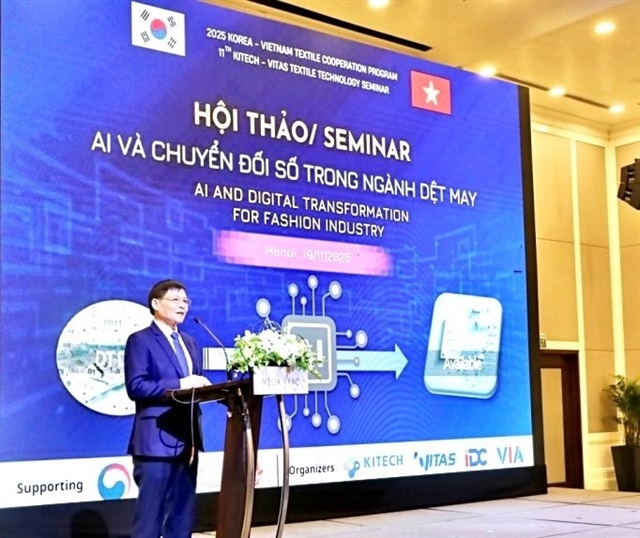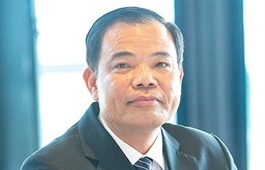Master plan for a competitive power market
Master plan for a competitive power market
A power development plan for 2021-30 with a vision to 2045 would not only meet electricity demand but also more importantly create a strong association between Viet Nam and other countries in the region towards a competitive power market.

Deputy Minister of Industry and Trade Hoang Quoc Vuong made the statement at a conference held in Ha Noi on Monday.
Vuong said the power development master plan 8 had basically been completed and would be submitted to Prime Minister Nguyen Xuan Phuc for approval next month.
The country's total power output is expected to increase by nearly 80,000MW by 2030. Large power sources such as coal, gas and LNG thermal power plants are expected to increase by over 30,000MW, while onshore and offshore wind and solar power plants will expand by approximately 50,000MW.
“Most of these sources are located far from central power centres. Therefore, the development of transmission grids to carry the capacity of these power sources raises many issues that need to be considered. Research for the plan found that transmission patterns were likely to change, and instead of transmitting electricity from the North to the South as in the past, the direction would gradually change in the opposite direction,” he said.
He added that the harmonious development of the transmission grid and the stable operation of the system needed to be carefully studied and considered.
The Government has issued a policy regarding power imports from regional countries, and memorandums of understanding have been signed between Viet Nam and neighbouring countries to increase imports of electricity by 2030. However, the process of importing electricity has not achieved the expected results, affecting connections.
“The issue has been carefully studied by the MoIT to implement solutions to realise the Government's grid connection policies in the power development master plan 8,” Vuong said.
Nguyen Manh Cuong, deputy head of Electrical System Development under the Institute of Energy, said the power development master plan 7 had been implemented for nearly 10 years. The implementation of the master plan had achieved many good results, basically meeting the load demand with an average annual growth rate of 10.5 per cent. The electricity network operated stably, safely and reliably, meeting the needs of socio-economic development and ensuring national security and defence. The source structure was quite diversified, with active participation of private investors. The electricity access index had made great progress, and from 2013-18 it improved by 129 steps, reaching 27th position out of 190 economies in 2019 and currently ranking 4th in ASEAN. A wholesale electricity market was also in the process of development.
“However, the power sector has faced many major challenges such as growing demand and an uneven development of power sources in different regions. In addition, the implementation of many large power projects, especially coal-fired thermal power projects, is still behind schedule. There has been rapid development of renewable energy sources but the power grid has not kept up, leading to the fact that power in some places is not fully used. The electricity price mechanism has also failed to meet the requirements or attract investment. Environmental protection still poses many challenges,” he said.
In this context, power master plan 8 is expected to provide comprehensive solutions to address current bottlenecks in electricity development.
The research showed that the load growth rate in 2021-30 is forecast to remain high, about 8.6 per cent from 2021-25 and 7.2 per cent from 2026-30. Power source development has been thoroughly researched, considered and analysed. The scenario of optimal power source development is the one that meets the objectives set out in Resolution No 55 towards becoming environmentally friendly and maximising the benefits of renewable energy sources.
The capacity of the whole system is expected to reach about 138,000MW by 2030 and 302,000MW by 2045, of which priority is given to the development of renewable energy sources in accordance with the potential of each region to ensure safety. Coal-fired thermal power will be reduced gradually, with an increase in gas thermal electricity to compensate.
However, the challenges that await power master plan 8 are also great. Electricity demand is still growing at a high rate but primary energy sources are becoming increasingly scarce. To ensure electricity supply by 2030, Viet Nam is expected to import about 1.2 million tonnes of LNG and 35.1 million tonnes of coal per year by 2025, gradually increasing to 8.5 million tonnes of LNG and 45 million tonnes of coal by 2030.
These are big challenges to ensuring electricity supply security. The annual investment needed for the power and grid development programme will amount to about US$13 billion for 2021-30, while the increasing environmental requirements of international organisations in considering credit for power and grid development also pose many challenges to the successful implementation of the plan.
“To solve this problem, many mechanisms and policies have been proposed, including a bidding mechanism to select investors for power projects, and the socialisation of transmission grids to encourage all economic components to get involved in the investment and development of the electricity industry,” he added.


























